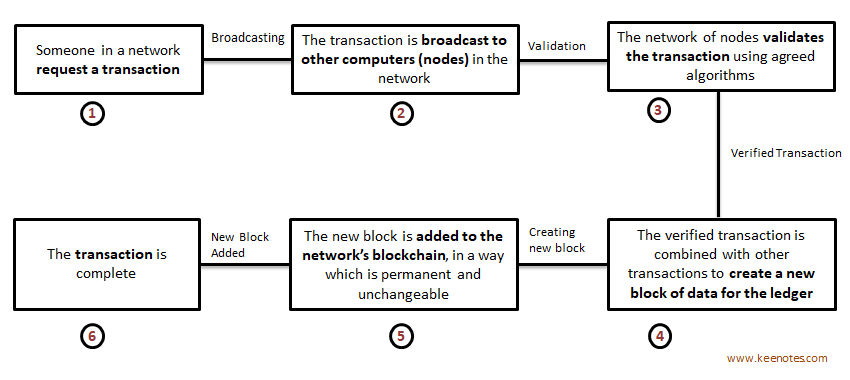
Blockchain and its Significance
Issues with Existing System
- Centralized power – All systems are being governed by a single, centralised government.
- Private Ledgers – Every system has its own private ledgers.
- Hacking/prone to corruption – The system is vulnerable to external hacking during the moment of reconciliation.
Life without Intermediaries
Suppose there were no middlemen involved in direct business-to-business or peer-to-peer interactions.
Banks
Government
any form of intermediary
What if technology could offer you the same experience without causing any delays caused by a procedure or regulation without compromising the security aspect?
But how?
Welcome to the World of Blockchain?
What is Blockchain?
Blockchain Technology creates decentralised digital public record of transactions which are
- Secure
- Anonymous
- Tamper-proof
- Immutable (Unchangeable)
In simple terms, consider Blockchain to be kind of new form of database.
Example: Consider Blockchain as a Google Spreadsheet, where users can add to, edit, and share information. Additionally, it includes a special feature that prevents tampering with updates; every update is considered final.
Benefits
- Blockchain makes all records public with improved transparency, in contrast to intermediate entities that keep a private database of documents.
- By eliminating high middleman costs, blockchain technology relieves both consumers and corporations of a significant burden.
- Blockchain technology would prevent hacking attacks and fraudulent activities that affect major central intermediaries.
“Blockchain raised a business value, which will cross $3.1 trillion by 2030”, according to Gartner’s Blockchain trend insight report 2017.
How can Blockchain Help?
- Flexible
- Open Source
- Distributed Architecture
- Automated Operations
- Digital Contract
- Worldwide Adoption
- Secure
Blockchain also helps
- Quick turnaround and cost-effectiveness
- Using smart contracts to reduce the number of trusted parties
- adding more choices for rights and access control
- reducing unnecessary effort
Once a record is committed to a blockchain, digital immutability means that it is nearly difficult to modify the record.
How Blockchain works?

Types of Blockchain
Based on the evolution of Blockchain over the past few years, it is popularly divided into three categories
1) Public Blockchain
2) Private Blockchain
3) Consortium/Federated Blockchain
Public Blockchain
Public Blockchain as the name suggests is open to all users in a distributed network.
- A system that is open and transparent
- No one is in control, and everyone may read, write, or audit.
- Everyone has read and write access to the ledger and may influence decisions.
- Every user keeps a copy of the ledgers on their local nodes.
- Decentralized consensus procedures like proof of work (POW) and proof of stake (POS) are utilised to determine the final state of the ledger because there isn’t a single in-charge.
Examples: Bitcoin, Ethereum
Private Blockchain
Private Blockchain as the name claims is a private property of an individual or an organization
- It is simply a distributed database and is not decentralised, unlike public blockchain. The company maintains control for all permits, though.
- A company can produce its own currency using this kind of blockchain.
- There will be a person in charge who controls read/write or grants only certain users access to read, or vice versa.
- Consensus or mining rights are obtained through in-charge
The beauty of decentralisation and open protocols are lost as a result of private blockchain’s main downside.
Example Multichain, Quorum
Consortium/Federated Blockchain
- This consortium blockchain architecture was developed to end the monopoly of private blockchain autonomy (Single party vested interests)
- The members of this consortium blockchain are in charge of it. They join together to make choices that will benefit the entire network.
- This blockchain is only partially decentralised.
- All or some members will have read-only access here, but only a select few will have write access.
- Users can access a predefined set of nodes where they can write data or blockchain on.
- Much quicker with more checks to prevent failures
Examples Ripple, R3
Comparison Analysis – Public, Private and Federated Blockchain
| Feature | Public | Private/Federated |
| Access | Open Read/Write | Permissioned Read and/or Write |
| Speed | Slower | Faster |
| Security | Proof of work Proof of Stake Other Consensus Mechanisms | Pre-approved participants |
| Identity | Anonymous | Pseudonymous know identities |
| Asset | Native Asset | Any Asset |
| Transaction Send | Anyone | Limited Centralized |
| Transaction Approve | Anyone | Few members centralized |
| Transaction Read | Anyone | limited |